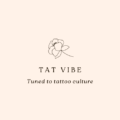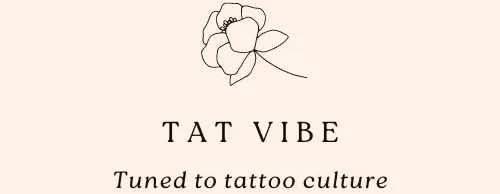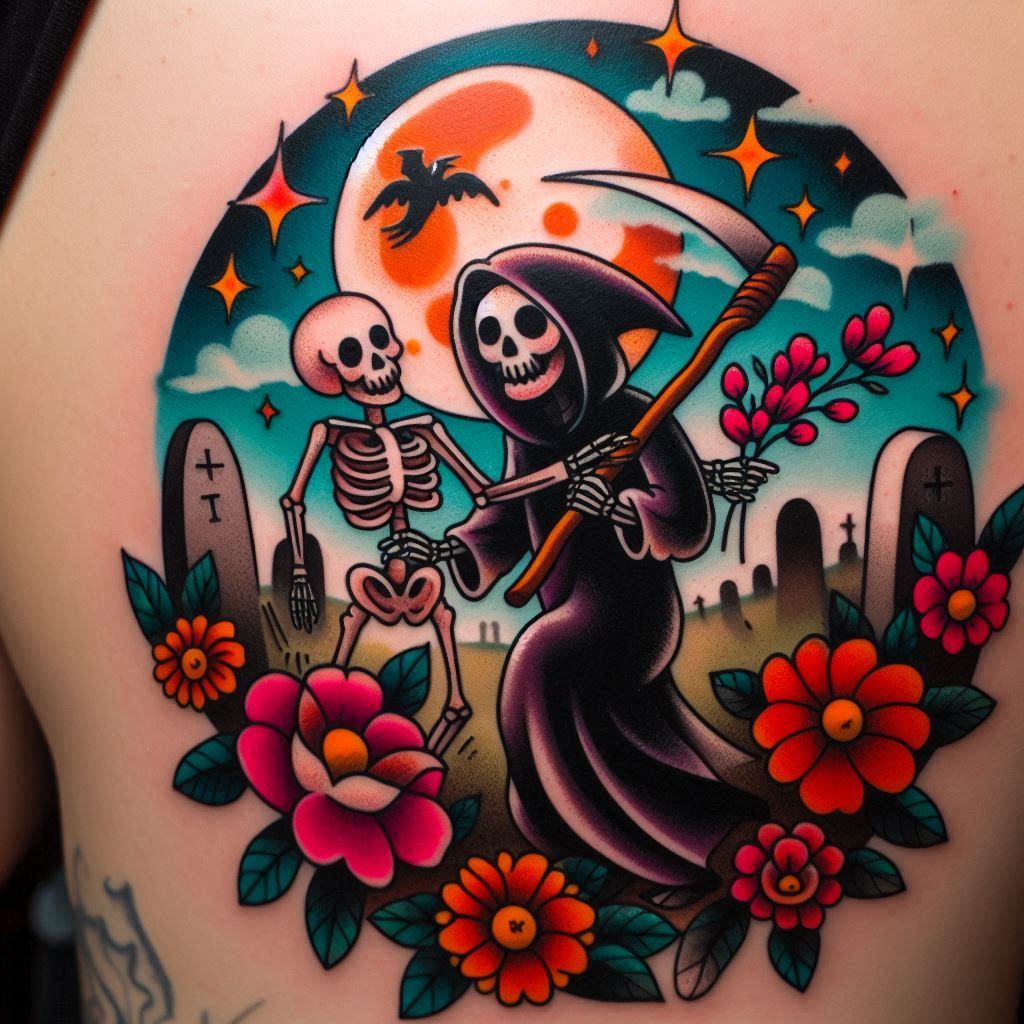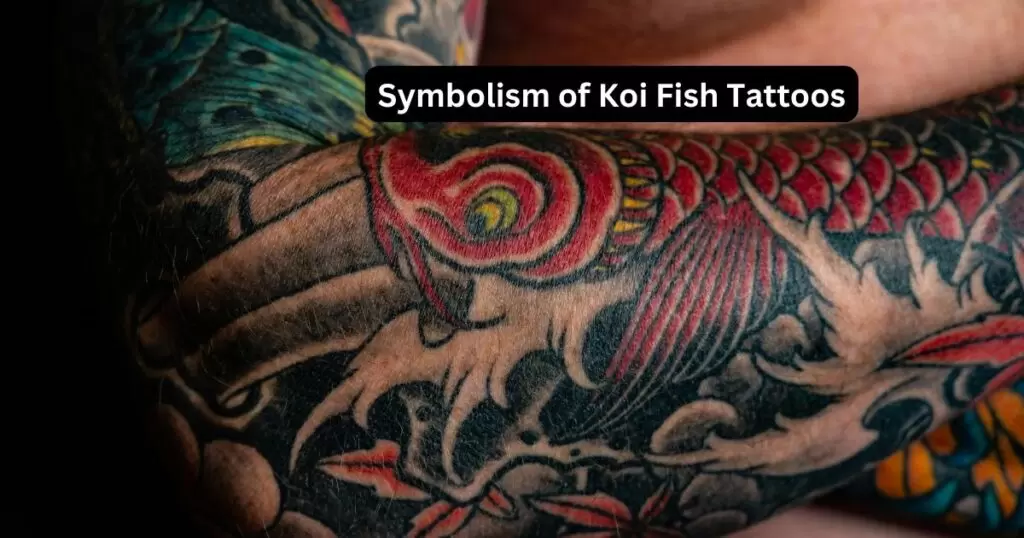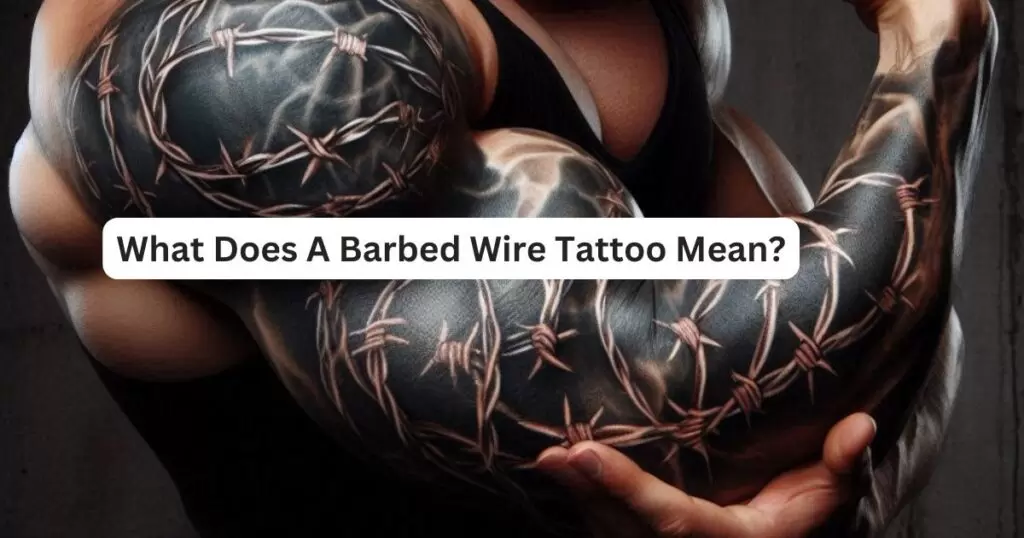An “Angel of Death tattoo” is a design that symbolizes the darker aspects of life, mortality, and the afterlife. This tattoo often features the figure of the Angel of Death, a being associated with guiding souls to the next life. It’s a powerful tattoo with deep meaning, drawing on themes of death, protection, and the unknown.
What Does The Angel Of Death Symbolize?
The Angel of Death is a prominent figure in various cultures and religions. Known for its role as the harbinger of death, this figure is often depicted as an angelic being who guides souls to the afterlife. An Angel of Death tattoo can carry a range of meanings, depending on how it’s interpreted by the individual.
Common themes linked to the Angel of Death tattoo include:
- Mortality: This tattoo serves as a reminder of life’s fleeting nature. It acknowledges the inevitability of death and encourages living fully in the present.
- Transition: The Angel of Death can symbolize the passage from one state of existence to another. It reflects transformation, whether spiritual, emotional, or physical.
- Protection: In some cultures, the Angel of Death is seen as a protector of souls, guiding them safely to the next realm. For those who view death not as an end but as a new beginning, the tattoo can represent a form of spiritual safeguarding.
- Fear and Power: For some, the image evokes fear or a fascination with the unknown. It can also symbolize personal strength, as the bearer confronts death’s inevitability head-on.
The meaning behind an Angel of Death tattoo varies by individual, but it often speaks to profound themes of life, death, and the beyond.
Origins of Angel of Death in Religion and Folklore
Most angel of death tattoos draw inspiration from the Abrahamic faiths, where Azrael serves this role in Islam and is often portrayed with large wings and a sword. In Christianity, this position is ascribed to the archangel Michael, who assists God in weighing souls.
Pagan traditions also included psychopomp figures to guide souls into the next world. These stern yet calming presences became associated with inevitable demise but offered a promise of what comes after.
Common Design Elements in Angel of Death Tattoos
Angel of Death tattoos can vary greatly in style and appearance. Here are a few common design elements to consider:
- Grim Reaper: One of the most recognized forms of the Angel of Death is the Grim Reaper. This figure, often depicted with a cloak and scythe, represents death in its most direct form. It’s a bold design that highlights themes of fear, finality, and mortality.
- Skeleton or Skull Angels: A skeletal or skull-faced angel is another popular form. This blend of angelic and macabre imagery can represent the duality of life and death. It’s a design that’s both eerie and symbolic, touching on the balance between existence and the inevitable end.
- Angelic Warrior: Some Angel of Death tattoos depict the figure as a warrior angel, armed and ready to guide souls through battle. This design often represents strength, courage, and the fight against death or evil.
- Fallen Angel: A fallen angel variation can add more emotional depth to the tattoo. This design symbolizes loss, regret, or the struggle between light and darkness. The fallen angel may represent a personal journey, grappling with inner turmoil, or past struggles.
- Minimalist Angel of Death: For those who prefer subtlety, minimalist designs can evoke the Angel of Death without heavy detail. These tattoos often focus on simple outlines or abstract forms, capturing the essence of the figure without intricate shading or elaborate features.
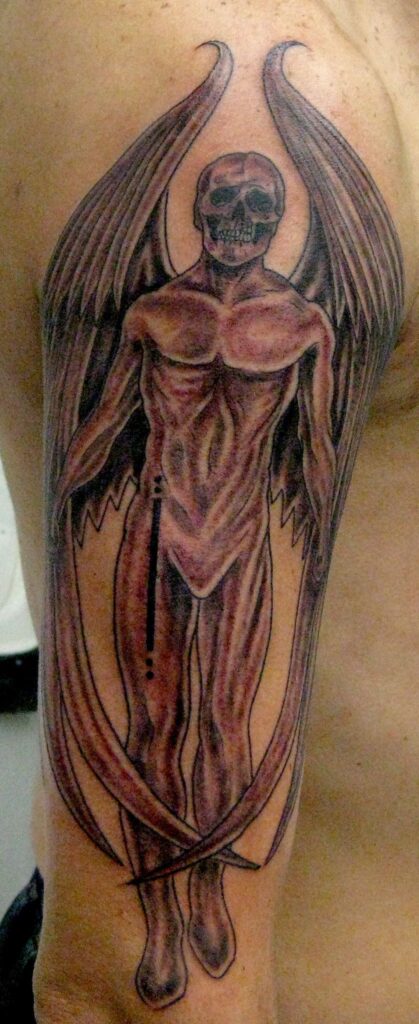
Placement Ideas for Angel of Death Tattoos
The placement of your Angel of Death tattoo can affect both its size and its impact. Below are some common placement options:
- Back: The back provides a large canvas for detailed and intricate designs. This area is ideal for larger, more elaborate tattoos that include multiple elements, like wings or a full-bodied figure.
- Arm: Many people choose to place an Angel of Death tattoo on the upper arm or forearm. This area is great for medium-sized tattoos and can be easily shown or covered, depending on your preference.
- Chest: A tattoo on the chest can give the design personal significance, as it is close to the heart. The chest also offers space for larger designs.
- Leg: A tattoo on the thigh or calf offers a good balance of space and visibility. The shape of the leg allows for elongated designs, such as a full-length Angel of Death figure.
- Hand or Wrist: Smaller Angel of Death tattoos can be placed on the wrist or hand. These designs are often simplified but can still carry a powerful message.
FAQs about Angel of Death Tattoos
1. Is the Angel of Death tattoo considered a negative symbol?
Not necessarily. While the Angel of Death is associated with death, many see it as a neutral or even positive figure. It can symbolize guidance, transition, and protection. The meaning of the tattoo depends on the individual’s perspective and cultural or spiritual beliefs.
2. Can an Angel of Death tattoo be combined with other symbols?
Yes, many people choose to combine the Angel of Death with other symbols like clocks (representing time), roses (symbolizing life and death), or crosses (for religious connotations). These additions can enhance the overall meaning of the tattoo and personalize it to reflect the wearer’s beliefs or experiences.
3. Should I consider cultural or religious meanings before getting an Angel of Death tattoo?
Yes, it’s important to be mindful of cultural and religious interpretations of the Angel of Death. In some cultures, it holds deep religious significance, and using certain symbols or imagery may be seen as disrespectful. It’s a good idea to research and understand the cultural context if you plan to incorporate these elements into your design.
4. How long does it take to get an Angel of Death tattoo?
The time it takes to complete an Angel of Death tattoo depends on the size, complexity, and level of detail. Smaller, minimalist designs may take just an hour or two, while larger pieces with intricate shading could take multiple sessions spanning several hours each. Discuss timing with your tattoo artist to plan accordingly.
A Summary
An angel of death tattoo is a powerful symbol of mortality and transformation. Whether you choose a Grim Reaper, fallen angel, or another design, it serves as a reminder of mortality and personal strength.
Carefully select a design and placement that reflects your beliefs and story. With the right meaning and artistry, this tattoo can carry deep personal significance for years to come.
